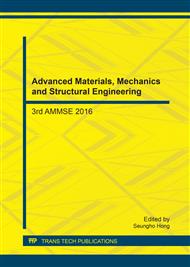p.141
p.149
p.157
p.163
p.170
p.175
p.183
p.189
p.195
The Inner Flow and Heat Transfer Analysis of Round Tube with Different Rotating Speed
Abstract:
Aiming at the inner flowing characteristics of round tube, the different transient cases of tube with rotating wall boundary are analyzed by CFD, and the six cases are determined according to the different rotating speed respectively. The fluid is water, with the same dimension of tubes, the negative pressure region moves forward in the tube as the increase of rotating speed, and the outflow velocity is high to 31.42 mm/s, being 348.22% more than that of steady case. When the rotating speed is 1 rev./s, there is a lowest temperature band between the wall and center high temperature flow. In the transient temperature analysis, the high temperature cloud changes to cone-like shape, and there is a swirl with lower temperature at the inlet part with a large depth into the tube center. The case with 2 rev./s has the much more uniform temperature distribution than others.
Info:
Periodical:
Pages:
170-174
Citation:
Online since:
February 2017
Authors:
Keywords:
Price:
Сopyright:
© 2017 Trans Tech Publications Ltd. All Rights Reserved
Share:
Citation:


